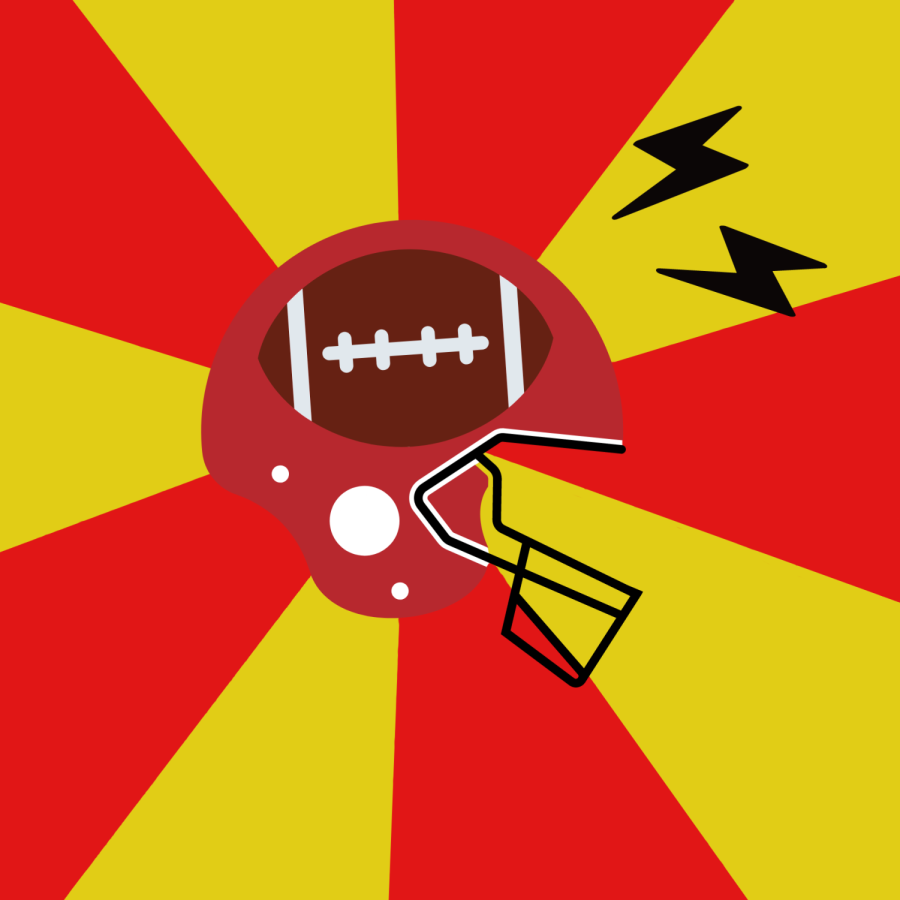Should football be in high school?
Used with Permission by Artwork by Daniel Valentine
According to a study done by Boston University, 21% of high school football players develop CTE.
October 25, 2022
High school football is well known for its sense of comradery and belonging. Football is also known for severe injuries.
Many of the physical injuries that have occurred on the LHS football team have not been season-ending, but brain damage is very hard to diagnose and can be an underlying issue. While we can observe symptoms, most brain injuries or deteriorations can only be diagnosed post-mortem. Chronic traumatic encephalopathy (CTE) is a perfect example of this. It’s caused by blunt trauma to the head, and has no treatment. It is not beneficial for high school students to be at risk for concussions and brain damage while they are still growing. Furthermore, if a football student were to walk away from a brain injury, they are still expected to learn and get their homework done. Boston University released a study in the July 2017 Journal of the American Medical Association where it was found that out of their samples, 21% of high school football players had CTE. It is imperative to note that only a small amount of injuries at LHS have been contact injuries, the kind that causes brain damage in the first place.
“A majority of the injuries that we have had have been non-contact injuries,” said Jared Fredenburg, the LHS head football coach. “Injuries happen when [the students] fall weird, or they plant their feet wrong. Elliott [Renville] broke his thumb, but he just caught it wrong. It wasn’t even a contact [injury].”
This is not to say that I don’t believe the coaches at LHS aren’t already taking care of their students. While I do think football is dangerous, I also understand that there are lots of regulations put in place to prevent the exact issues I am talking about. Unsurprisingly, there has already been a lot of care poured into this subject. I firmly believe that our district is doing its best to care for its football players, even when it may be to the player’s dismay. Some players may believe that they are fine after a few days, but the district has strict policies they enforce on any player who has symptoms of a concussion. Closely monitoring brain injury symptoms like this is imperative in caring for the students.
“We’ve had two or three concussions [this season]. I think that we’re so aware of concussion symptoms that we’re very cognisant of that stuff. Sawyer Tolk for example, he was feeling [fine] after two days with no [concussion] symptoms, but the protocols are very specific. You have to have so many days of symptom-free practice, and he was a day short for a game,” said Fredenburg. “I think we take care of our athletes a lot better than we used to, because there’s a lot more research out there.”
Another aspect of not removing football is that high school students are very determined to be in Division I teams. For obvious reasons, you cannot just pick up football once your brain is done developing (around 25-years-old) and expect to be good enough to be on a D-I team. Some of the most talented players currently in high school may not even get to that point, but I respect and understand the commitment. I am not writing this article to say that I wholly oppose football, I don’t. Football is incredibly important to American culture as entertainment, and it’s been around for hundreds of years. My opinion on it is not going to change that. I do believe that it is important to take a step back and realize that football is in fact quite dangerous. Sure, I will attend football games, but it’s good to remember what the students go through to get there.
“Elliott[‘s injury] was at practice, he was just running through cones and he fell weird and his thumb got caught underneath him, and broke it,” said Fredenburg. Interestingly, a lot of injuries don’t actually occur at games — many occur during practice. All in all, football is both dangerous and an important staple as a high school sport.








